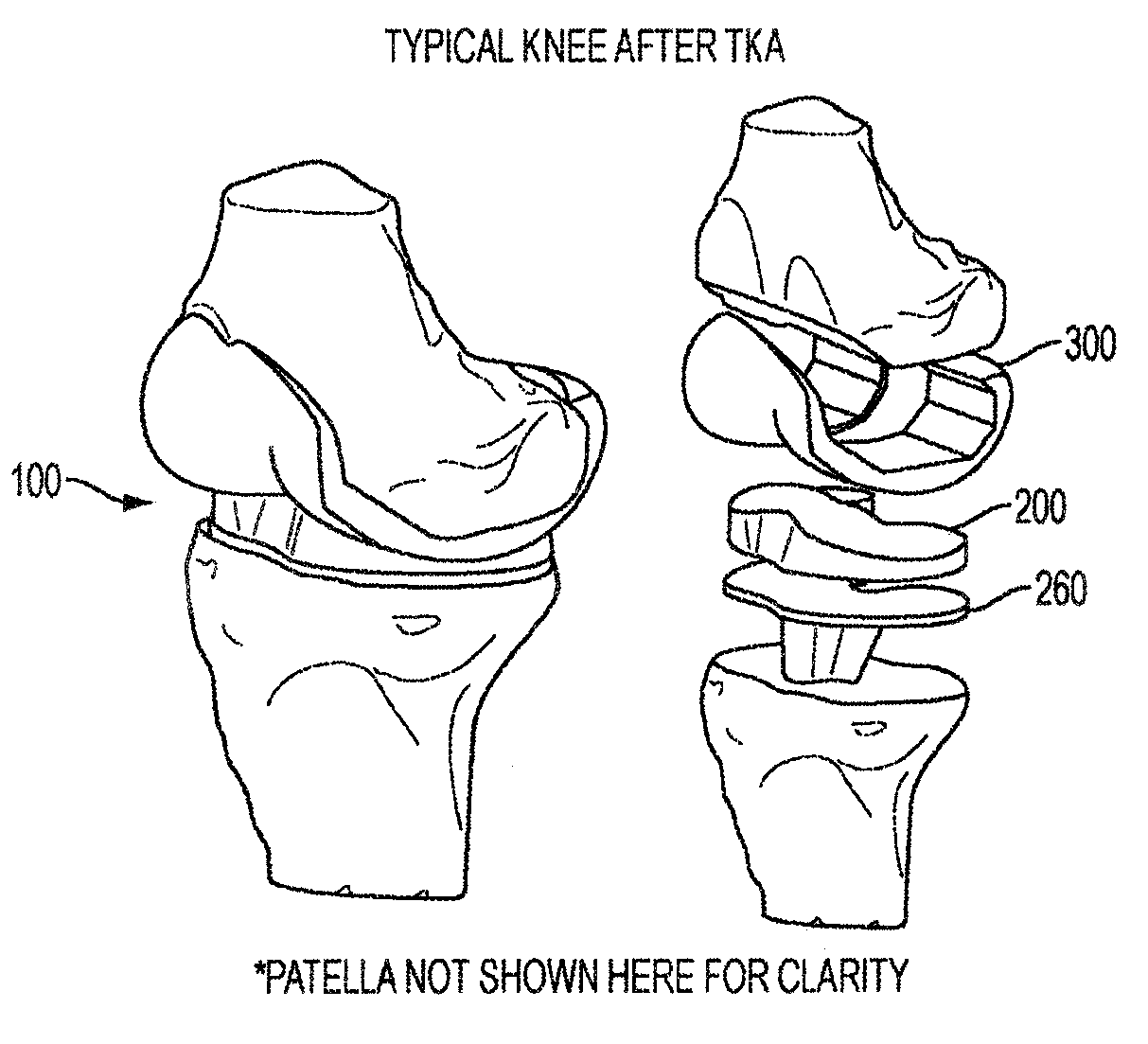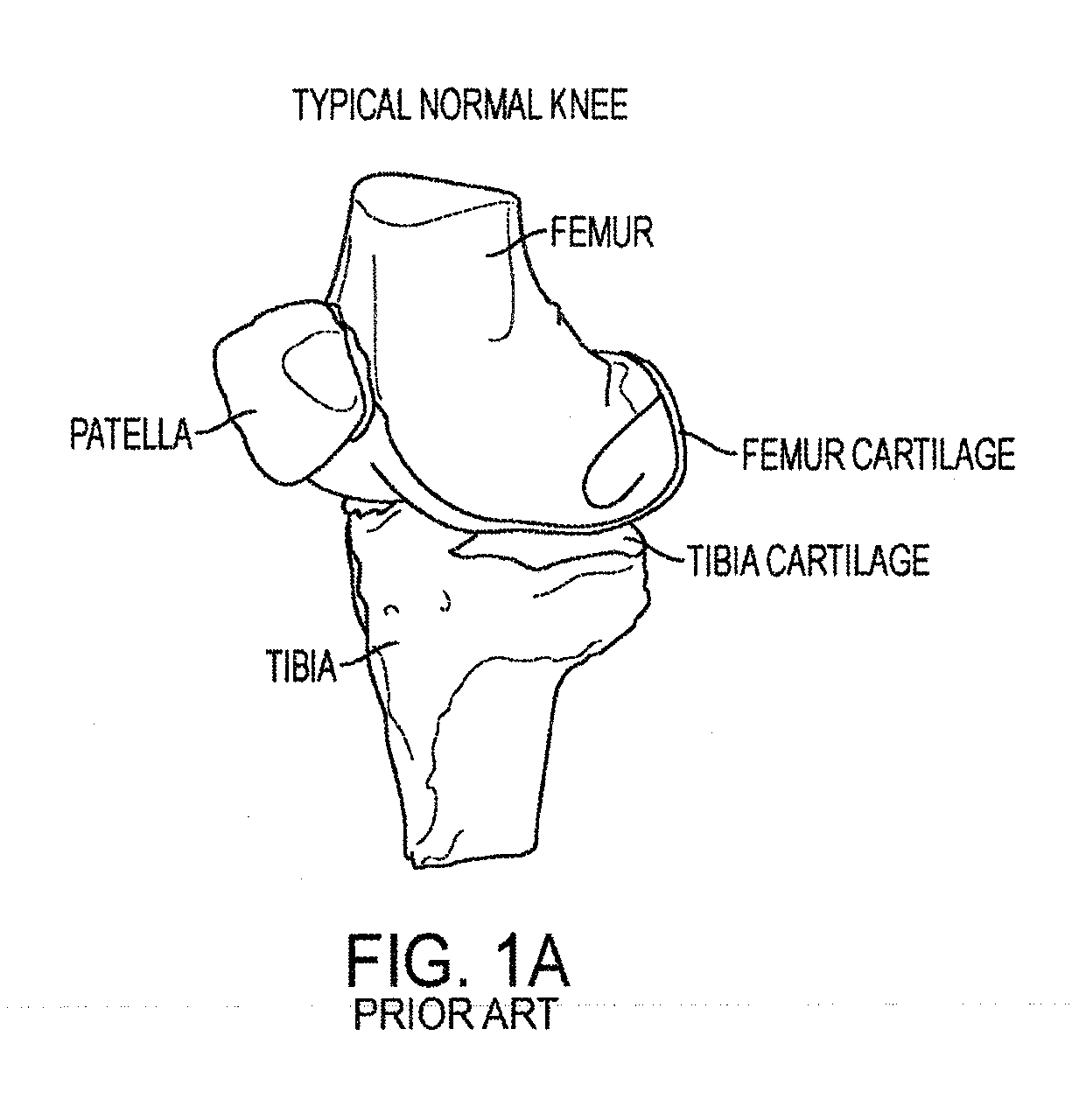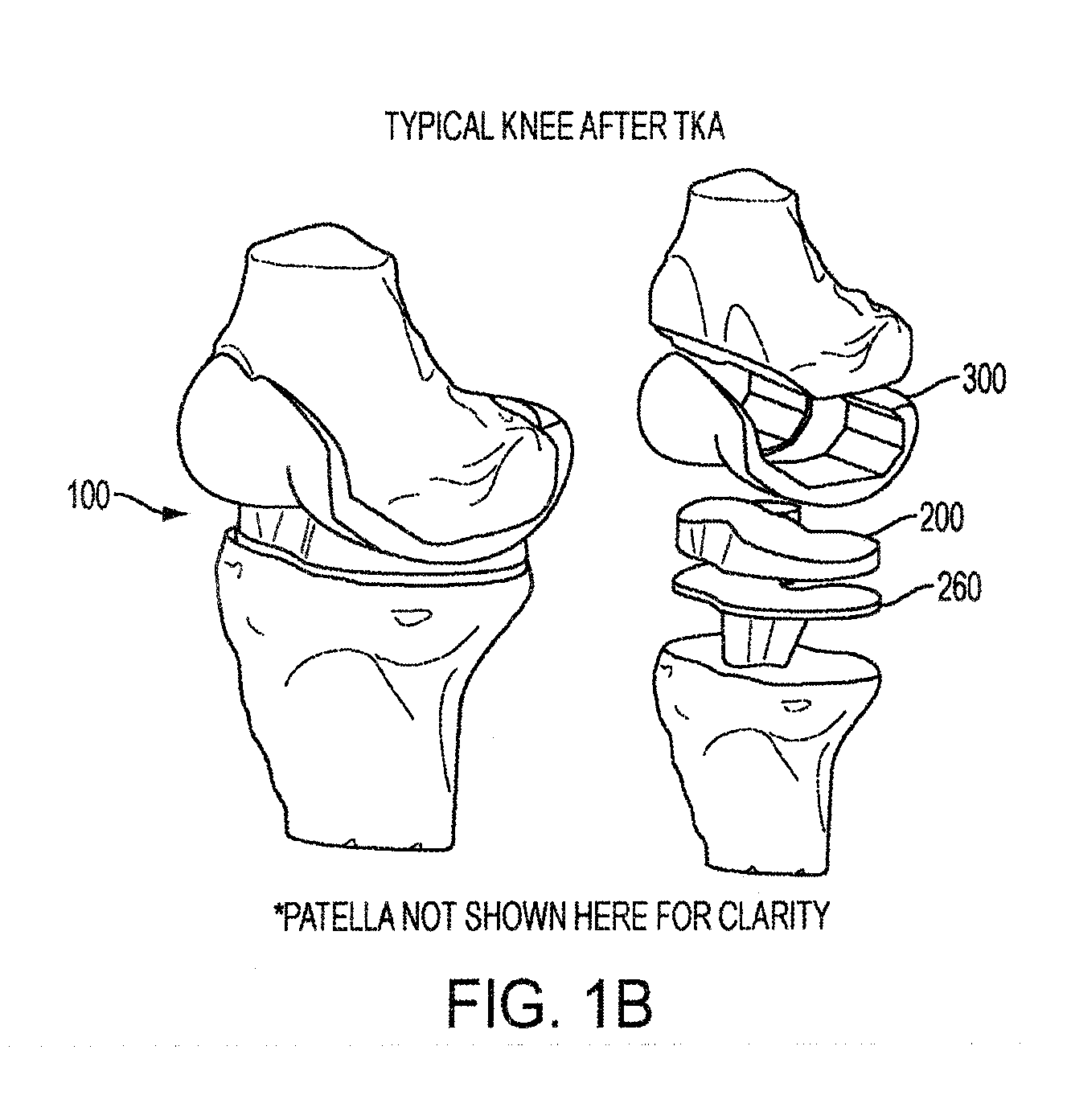Implant for restoring normal range flexion and kinematics of the knee
a knee joint and kinematic technology, applied in the field of knee joint prostheses, can solve the problems of limiting patient function after surgery, inability of existing designs to replicate in vivo, and abnormal patellofemoral kinematics of current tka designs, so as to prevent tibiofemoral joint space overstuffing, avoid medial/lateral tibial surface subsidence, and increase strength
- Summary
- Abstract
- Description
- Claims
- Application Information
AI Technical Summary
Benefits of technology
Problems solved by technology
Method used
Image
Examples
Embodiment Construction
[0083]Various embodiments of the invention provide improved knee prostheses for replacing at least a portion of a knee joint between the distal end of a femur and the proximal end of a tibia.
[0084]Embodiments of the invention provide knee prostheses which more faithfully and closely replicate the function, anatomy and physiology of the normal human knee yielding a number of advantages. Among other things, such prostheses can provide an increased range of motion and function more normally particularly in extension, deep flexion and during normal gait. Knee prostheses according to various aspects of the invention recognize that during movement of the knee, particularly during flexion, the kinematics of the bones of the knee are a result of achieving equilibrium of the forces that cause motion of the knee. In addition, the shape of the articular surfaces acting in combination with forces imposed by various muscles, ligaments and tendons, determines the direction of the large contact fo...
PUM
 Login to View More
Login to View More Abstract
Description
Claims
Application Information
 Login to View More
Login to View More - R&D
- Intellectual Property
- Life Sciences
- Materials
- Tech Scout
- Unparalleled Data Quality
- Higher Quality Content
- 60% Fewer Hallucinations
Browse by: Latest US Patents, China's latest patents, Technical Efficacy Thesaurus, Application Domain, Technology Topic, Popular Technical Reports.
© 2025 PatSnap. All rights reserved.Legal|Privacy policy|Modern Slavery Act Transparency Statement|Sitemap|About US| Contact US: help@patsnap.com



